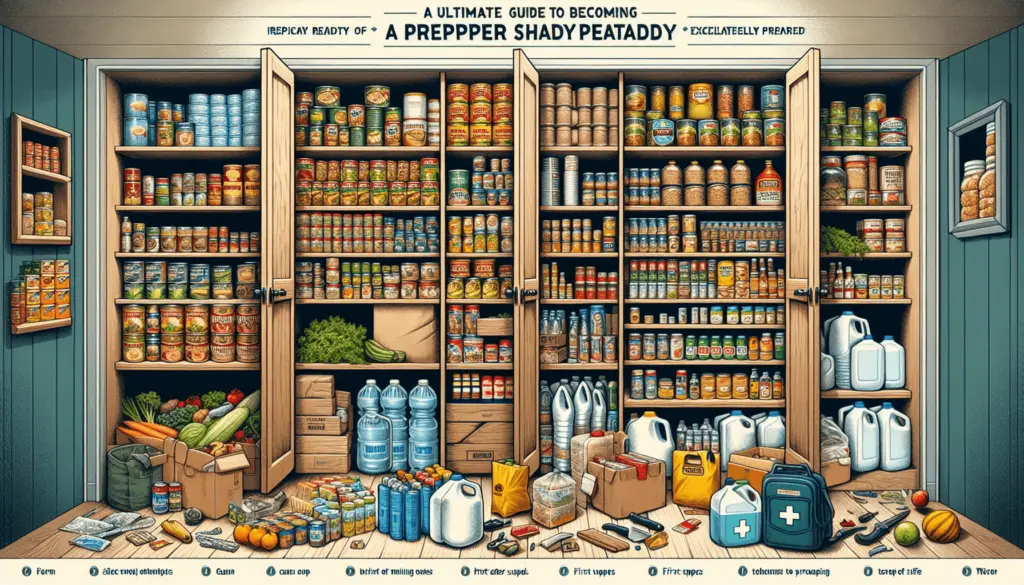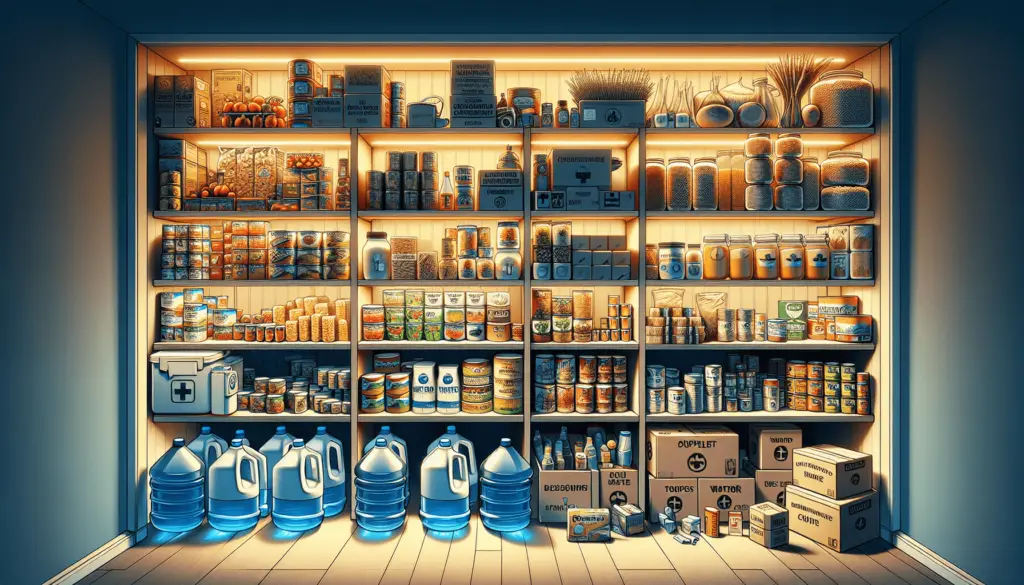Welcome to the ultimate guide on transitioning to a prepper lifestyle! In this article, you will learn step-by-step how to embrace the principles of preparedness, self-sufficiency, and resilience. From creating a well-stocked emergency kit to honing crucial survival skills, you will be empowered to navigate any challenging situation with confidence and peace of mind. So buckle up and get ready to embark on a journey towards a more secure and self-reliant future! Are you interested in transitioning to a prepper lifestyle but not sure where to start? Don’t worry, we’ve got you covered! In this step-by-step guide, we will walk you through the process of becoming a prepper and help you prepare for any situation that may come your way. So grab a cup of coffee, sit back, and let’s get started on this exciting journey together!

Understanding the Prepper Lifestyle
Welcome to the world of prepping! Before we dive into the nitty-gritty details, let’s take a moment to understand what it means to be a prepper. Prepping is all about being prepared for emergencies, disasters, or any unforeseen events that may disrupt your daily life. Being a prepper doesn’t mean living in fear; it means being proactive and taking control of your safety and well-being.
What Is Prepping?
Prepping involves building up a stockpile of essential supplies, learning survival skills, and creating a plan to ensure your survival in any situation. Whether it’s a natural disaster, economic collapse, or a global pandemic, preppers are ready to face the challenges head-on.
Why Should You Become a Prepper?
You never know when disaster will strike, and being prepared can mean the difference between life and death. By becoming a prepper, you are taking control of your future and ensuring the safety and well-being of yourself and your loved ones. It’s better to be safe than sorry!
Getting Started: Assess Your Needs
The first step in transitioning to a prepper lifestyle is to assess your needs and determine what you need to be prepared for. Take a moment to think about the potential risks in your area, your skill level, and your budget.
Assessing Potential Risks
Consider the types of disasters or emergencies that are most likely to occur in your area. Are you prone to hurricanes, earthquakes, wildfires, or severe weather? Knowing the risks will help you determine what supplies and skills you need to prioritize.
Evaluating Your Skill Level
Take an honest look at your current skill set. Are you proficient in basic survival skills such as first aid, fire starting, and shelter building? If not, don’t worry – we’ll cover all of that in detail later in this guide.
Setting a Budget
Preparing for emergencies doesn’t have to break the bank. Set a budget for your prepping supplies and equipment, and prioritize the essentials first. You can always build up your stockpile over time as your budget allows.

Building Your Prepper Stockpile
One of the key aspects of prepping is building up a stockpile of essential supplies that will sustain you in times of need. Start small and gradually build up your stockpile over time.
Food and Water
Food and water are the most critical supplies to have in your stockpile. Aim to have a three-day supply of non-perishable food and one gallon of water per person per day. Stock up on canned goods, dried fruits and nuts, granola bars, and other shelf-stable foods.
| Food Item | Quantity | Notes |
|---|---|---|
| Canned Goods | 20 cans | Variety of vegetables, fruits, and meats |
| Granola Bars | 1 box | |
| Dried Fruits | 2 bags |
First Aid Kit
A well-stocked first aid kit is essential for any prepper. Include items such as bandages, antiseptic wipes, pain relievers, and any necessary medications. Make sure to regularly check and update your first aid kit as needed.
| First Aid Item | Quantity | Notes |
|---|---|---|
| Bandages | 1 box | Assorted sizes and types |
| Antiseptic Wipes | 1 box | |
| Pain Relievers | 1 bottle | Ibuprofen, acetaminophen, etc. |
Shelter and Clothing
In a disaster situation, you may need to shelter in place or evacuate your home. Have a supply of warm clothing, blankets, and tarps on hand to protect you from the elements.
| Shelter/Clothing Item | Quantity | Notes |
|---|---|---|
| Blankets | 4 | Wool or thermal blankets |
| Tarps | 2 |
Learning Essential Survival Skills
In addition to stockpiling supplies, it’s crucial to learn essential survival skills that will help you navigate through any emergency situation.
Fire Starting
Learning how to start a fire without matches or a lighter is a fundamental survival skill. Practice using a fire starter, flint and steel, or other methods to build a fire in various conditions.
Navigation
Knowing how to read a map, use a compass, and navigate without GPS is essential in a survival situation. Practice orienteering and map reading to hone your navigation skills.
First Aid
Take a first aid course to learn basic medical skills such as CPR, wound care, and treating burns. Having knowledge of first aid can save lives in an emergency.
Creating an Emergency Plan
Having a solid emergency plan in place is essential for preppers. Sit down with your family or household members and create a detailed plan for various scenarios.
Communication Plan
Designate a meeting point and establish communication protocols in case your family is separated during an emergency. Make sure everyone knows how to contact each other and where to meet up.
Evacuation Plan
Plan multiple evacuation routes from your home and designate a safe location to evacuate to. Practice your evacuation plan regularly so everyone knows what to do in an emergency.
Shelter-in-Place Plan
If you need to shelter in place, designate a safe room in your home and stock it with supplies such as food, water, and a first aid kit. Make sure everyone knows where the safe room is and how to access it.
Staying Informed and Prepared
Being a prepper is an ongoing process, and it’s essential to stay informed and prepared for any situation that may arise.
Stay Informed
Monitor local news, weather alerts, and emergency broadcasts to stay informed about potential risks in your area. Stay up to date on the latest safety guidelines and recommendations.
Regularly Update Your Supplies
Regularly check and update your stockpile of supplies, rotating out expired items and adding new ones as needed. Keep your first aid kit stocked and ensure it’s up to date with any necessary medications.
Practice, Practice, Practice
Put your emergency plan to the test by conducting regular drills and practicing your survival skills. The more you practice, the more prepared you’ll be when an actual emergency occurs.
Final Thoughts
Congratulations, you’ve taken the first step towards transitioning to a prepper lifestyle! By building up your stockpile, learning essential survival skills, creating an emergency plan, and staying informed, you are well on your way to being prepared for whatever comes your way. Remember, prepping is all about being proactive and taking control of your safety and well-being. So keep up the good work, stay informed, and stay prepared – you’ve got this!
